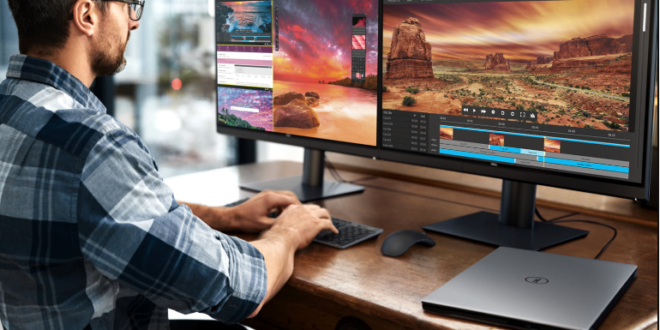When you buy yourself a good PC, laptop or want a good display gadget. Nothing can replace a good monitor. Because with a monitor, you have got yourself lot of options. But the question comes, how to buy the right one?
It’s not a one-word answer. You can look for in-depth research into the specification required and then you can decide for yourself. In this guide, you’ll learn about the necessary features you got to consider while picking one:
Response time
Monitor response is the minimum time it takes for a pixel to change its brightness. Another important indicator for gamers will allow, with a good reaction, to notice the enemy earlier. Each manufacturer interprets this characteristic in its own way and tries to reduce its value. For this, matrix overclocking (overdrive) and different measurement techniques are used.
To speed up the “rotation” of the subpixel’s, increased voltage is applied to them for a short time. The technology is considered harmless, but it can cause overclocking artifacts – afterimages, trails, etc.
GTG (gray to gray) – switch from 90% gray to 10% brightness. This is the most popular metering method, apparently because it gives the best possible result. Much less common is BtW (black to white) – the transition of an inactive black pixel to the maximum white – and BWB (black-white-black) – switching black to white and vice versa.
It is almost impossible to measure the response time at home, and therefore you have to take the manufacturers’ word for it, even if the cherished 1 ms was obtained in laboratory conditions with a wild overclocking of the matrix.
The MPRT (motion picture response time) is the so-called cinematic response for a moving picture. It is not the pixel response time as such,
and it would be more correct to call it the pixel visibility time.
In real life, for a gaming monitor, an honest 1-4 ms will be a good indicator. Even 8 ms is enough for a normal device.
Eye protection technologies
Almost all modern monitors are equipped with one or another set of vision protection systems. Devices without PWM (pulse width modulation) have Flicker-Free or Flicker safe labels in their specifications, which indicate the absence of flicker invisible to the eye.
Low Blue Light protection technology reduces blue light emission in the 420-480 nm range, thereby reducing eye strain. However, this option has long been implemented programmatically in Windows 10, so if it’s not there, it’s not scary.
Connectors
To connect the monitor to a modern PC, either HDMI 2.0 or DisplayPort 1.4 is used. Only they are capable of transmitting high resolution images at high frame rates. In budget models and oldies, you can find DVI and VGA.
Mac connoisseurs may recall the existence of Thunderbolt 3 (Type-C) – a really convenient connector that can also charge back. True, monitors with it can be counted on the fingers of one hand.
Additional ports such as USB as a hub and a 3.5mm headphone jack are also common in monitors. How much they are needed; everyone decides for himself.
Adjustable stand and VESA mount
The stand is an important part of the monitor’s ergonomics. A common foot often only adjusts the tilt of the panel. More advanced stands can still change height. The top models add adjustment for the rotation angle (up to 90 degrees) and display orientation (portrait / landscape).
With a limited area of the table, you should pay attention to the shape and size of the stand. First of all, this applies to curved models with massive legs. Otherwise, the user runs the risk of being “face to face” with his new display. And even more so, do not expect to put it on the shelf for the monitor, which they like to equip budget computer desks with.
Almost all monitors have a VESA mount (most often 100 x 100 mm ). It allows you to effortlessly hang the device on a wall or install it on a special bracket.
 HammBurg Be informed with latest news, reviews, entertainment, lifestyle tips, and much more.
HammBurg Be informed with latest news, reviews, entertainment, lifestyle tips, and much more.




